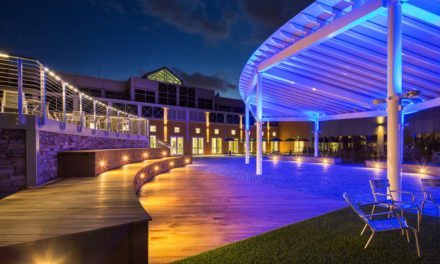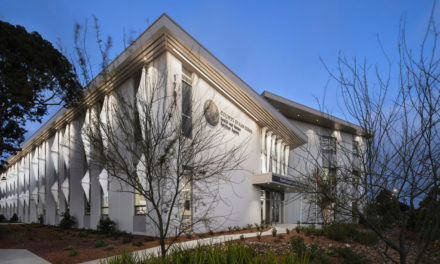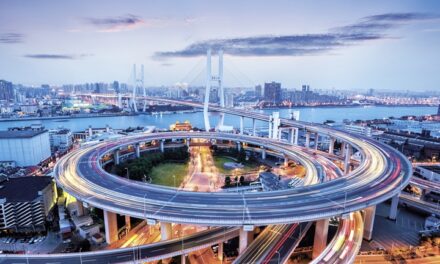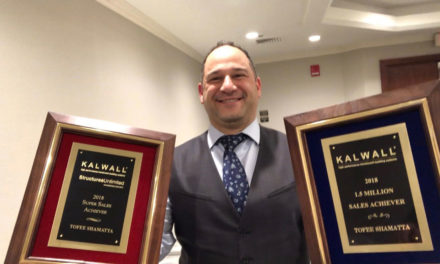CHICAGO–(BUSINESS WIRE)–In response to ever-increasing market demand for performance and sustainability, the LafargeHolcim family of companies in the U.S. has rebranded its portfolio of blended cements and supplementary cementitious materials (SCMs) as the Envirocore™ Series. As the largest cement manufacturer in the United States, LafargeHolcim is calling on architects, engineers, contractors and ready-mix producers to adopt more sustainable products in order to lower the industry’s carbon footprint.
“Concrete is the most widely-consumed material after water, so we consider it our responsibility to do everything we can to lower the carbon footprint of the cement we produce,” said Patrick Cleary, senior vice president of Sales, US Cement. “Our cement organization has invested heavily in offering blended cements and SCMs to customers for two decades. This rebrand signifies that the time for change in the building industry is now, and we stand ready to provide these proven solutions,” he added.
Compared to other building materials in terms of embodied energy and CO2 emissions, concrete is the favorable choice for building and infrastructure expansion. However, the fact remains that concrete has a high carbon footprint due to the energy intensiveness and generation of CO2 in Portland cement manufacturing.
Products under the Envirocore Series include OneCem® Portland Limestone Cement, MaxCem® Blended Cement, and NewCem® Slag Cement. Many of these products incorporate SCMs, byproducts from other industries that offer sustainability and performance advantages for those who construct buildings of all kinds. Their use as a partial replacement for Portland cement not only results in more durable, high-performance concrete but also lowers energy consumption and greenhouse gas emissions. For every ton of clinker replaced by SCMs, CO2 emissions are reduced by approximately 0.8 tons.
The One Cement That Could Replace Standard Cement in the Future
While all products from the Envirocore Series benefit project performance and reduce carbon emissions, one product within this portfolio has the potential to be incorporated into a broad spectrum of applications.
“There’s a reason why we named our Portland limestone cement OneCem. This is the one cement that can apply to nearly all applications. We designed OneCem to perform the same or better than standard Portland cement so it can be used as a replacement for standard Portland cement. OneCem can also be used with SCMs, such as slag and fly ash, to further enhance performance and improve sustainability,” said David Diedrick, Director of Quality and Product Performance for LafargeHolcim’s US Cement business.
OneCem meets the specification requirements of C595/C595M − 19 and AASHTO M 240 in which the allowable finely ground limestone within the cement ranges from 5% to 15%. OneCem has been rigorously tested to verify its concrete strength development, setting time characteristics, durability, and other performance properties.
In the US, Holcim plants have produced more than 3 million metric tons of OneCem for concrete construction applications throughout the country. The Colorado Department of Transportation was the first transportation agency to use OneCem in 2008 on Ports to Plains US HW287 and Interstate I-25 south of Denver. The Utah Department of Transportation soon followed in 2009 with supply coming from Holcim’s Devil’s Slide Plant. In Colorado alone, OneCem has been used in more than 600 lane miles of concrete paving to help meet the state’s climate action plan, with no compromise in quality or long-term performance.
Moving the Industry Forward with Proven Solutions
Cleary said that while the building industry is considering how to lower its carbon footprint with new technologies and solutions, the building community should look to finely-ground limestone and blended cements as proven solutions that have been somewhat underutilized.
“The truth is; the industry is still in the early stages of embracing these solutions in the United States. We want to help accelerate adoption,” said Cleary.
Cleary added that offering the Envirocore Series is just one approach the company is taking to reduce emissions. LafargeHolcim partners with a number of startups and partners to advance carbon capture technology and commercialize innovative cement products that could significantly lower CO2 emissions in the cement industry.
“We’re confident that with ingenuity and innovation, anything is possible. We’re committed to optimizing performance and answering the call for a zero-carbon future,” he said.
About LafargeHolcim
LafargeHolcim is the global leader in building materials and solutions and active in four business segments: Cement, Aggregates, Ready-Mix Concrete and Solutions & Products. Its ambition is to lead the industry in reducing carbon emissions and shifting towards low-carbon construction. With the strongest R&D organization in the industry, the company seeks to constantly introduce and promote high-quality and sustainable building materials and solutions to its customers worldwide – whether individual homebuilders or developers of major infrastructure projects. LafargeHolcim employs over 70,000 employees in over 70 countries and has a portfolio that is equally balanced between developing and mature markets.
In the United States, LafargeHolcim companies include close to 350 sites in 43 states and employ 7,000 people. Our customers rely on us to help them design and build better communities with innovative solutions that deliver structural integrity and eco-efficiency.




